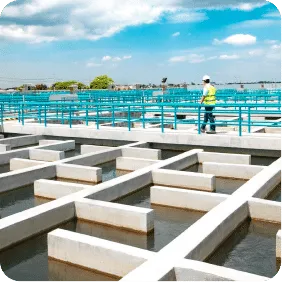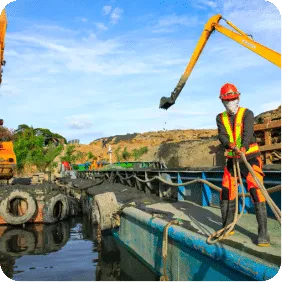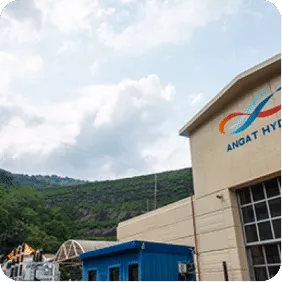Resource Management
We recognize the realities of our finite planet. Each year, the world marks Earth Overshoot Day, a date when humanity’s demand for ecological resources in a given year exceeds what Earth can generate in that year. In 2022, this day landed on July 28, which means that the present generation liquidated resources meant for future generations during the remainder of 2022. Over the decades, the ecological footprint of humanity has worsened, leading to World Overshoot Day coming earlier and earlier each year, moving from December 25 in 1970 to July 28 last year. The goal is to move the date forward. Not doing so will exact a heavy toll not only from an environmental and ecological point of view (climate change, biodiversity loss, drought) but also socially and economically (poverty, conflicts, wars).
Thus, we in San Miguel join the rest of the world in the quest to postpone this date by ensuring the effective and efficient management of our resources. Energy and water are two of the most vital resources for San Miguel. They are indispensable in the successful conduct of our businesses, from power generation, food and beverage production, to packaging operations and infrastructure development, among others. Energy and water are key so we can continue to create value for all our stakeholders and to contribute to the growth of the Philippine economy. Across our operations, we have adopted energy efficiency and water conservation initiatives that we will continue to enhance, expand, and elevate in the coming years so that we can achieve the most sustainable use of our resources, for this and future generations of Filipinos.
Energy
Energy is the fuel of the modern industrial economy. We use energy to fuel our capacity to deliver our services and products to the market—from operating our plants, for transportation and distribution, and for the lights in our offices and other company facilities.
In 2022, the Company consumed 149.3 million GJ energy. A sizable portion of our energy consumption comes from the non-renewable fuel usage of Petron and SMGP for their operations.

We are determined to reduce our energy consumption. By doing so, we would also reduce our operational costs and our environmental impact. As of 2022, approximately 38.26% of the Company’s operational spending is used on energy. Through various energy related programs, we were able to reduce our energy consumption by 103.3 thousand GJ of energy this year. We accomplished this by installing solar panels in various Petron gas stations and integrating the use of biomass in electrical generation in SMFB operations, among others. We are determined to continuously find new ways to be more efficient in our energy consumption and increase our use of renewable energy.
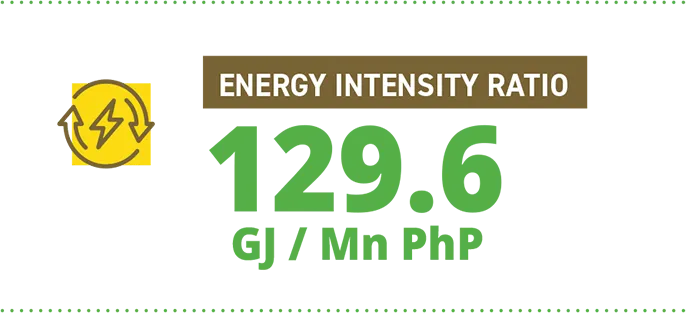
Our energy intensity for 2022 is 129.6 GJ for every million PhP of net sales. We aim to reduce our energy intensity while continuing to maintain robust growth and development in the Company. We plan to do this through employing more efficient energy technologies and alternatives such as recapturing excess heat from manufacturing and implementing renewable energy sources, such as solar power, biomass, and bioenergy, across all business units.
We recognize the challenges associated with climate change and the impacts it could have on SMC’s energy consumption. By effectively managing our energy consumption, we improve production reliability, lower our energy costs, and contribute to sustainable business operations.
Water
Water plays a vital role in our daily reality. Out of 115 million Filipinos, more than half lack access to sustainably sourced and safe water.
Achieving water security remains a longstanding challenge for our country. We Filipinos are no strangers to water-related challenges such as water pollution, water scarcity, and insufficient access to sanitation.
Recognizing this plight, we support the government’s thrust to achieve universal access to safe, sufficient, affordable, and sustainable water supply, hygiene, and sanitation by 2030. We will help create solutions and contribute to the government’s efforts in resolving water security challenges in the country. Thus, we have instituted water-saving and efficiency programs across our businesses and operations.

In 2022, 97% of our water withdrawal was seawater, which was used for cooling our equipment in our power plants and oil refinery. Approximately 98% of our total extracted water was discharged back safely to bodies of water at normal temperature after undergoing processing and treatment in our wastewater treatment facilities. The discharge of wastewater, whether to land or bodies of water, is highly regulated in the country and should satisfy the Water Quality Guidelines and General Effluent Standards of 2016 (DAO 2016-08; and updated DAO 2021-19). We ensure our full compliance with these standards by establishing wastewater treatment facilities across our operations. We designed these treatment facilities to properly handle the specific pollutants they are intended to treat, which can be by a combination of physical, chemical, aerobic, and/or anaerobic treatment. We also have in place a tertiary treatment facility in cases where we can reuse treated wastewater. Wastewater with high chemical oxygen demand or COD levels is pretreated using Upflow Anaerobic Sludge Blanket technology to generate biogas that we use as fuel in our operations.
The remaining 3% of our total water withdrawal in 2022 was consumed by the Group as part of our beverage products, in our business processes— cleaning, rinsing, steam generation—and for office operations. Of our total wastewater, we were able to recycle 1.5 billion liters in 2022 alone, which we plan to boost in the coming years.
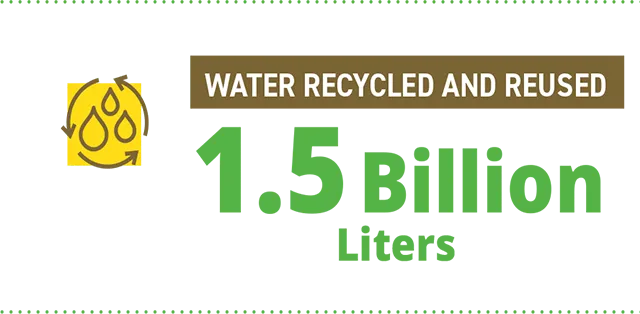
Foremost in our water sustainability initiatives is a flagship program called “Water for All,” an initiative established in 2017 that aims to reduce our Groupwide use of scarce water by 50% by 2025 against a 2016 baseline.
An example of a notable feat under “Water for All” comes from our cement business. As of 2022, our cement business reduced its scarce water consumption by 88% compared to 2016 values. Furthermore, it aims to minimize if not do away altogether with its freshwater usage by implementing solutions such as rainwater harvesting and full recycling. In 2022 alone, it collected 446 million liters of rainwater, which it used for its manufacturing processes.

